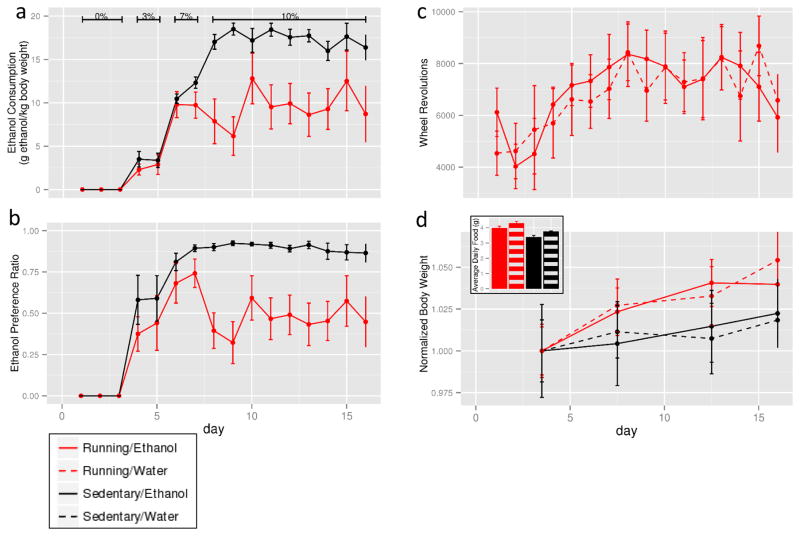Figure 1.
Behavioral outcomes of sixteen days of voluntary ethanol consumption and voluntary wheel running. Mice with access to running wheel are represented in red, while mice with access to ethanol are denoted by solid lines/bars. Running mice consumed less ethanol compared to sedentary mice when normalized to body weight (A) and when computed as a preference ratio (B). There was no difference in daily running wheel revolutions between mice consuming ethanol and mice only consuming water (C). Body weights for all mice increased over the course of the experiment (D). Mice consuming ethanol consumed less food than water-only mice, and running mice consumed more food than sedentary mice (inset).

